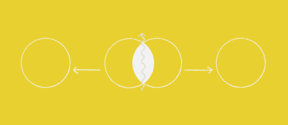Related frameworks and models
Other frameworks and models linked to embodied intelligence and transformative learning and leadership.

Theory U is a transformative learning framework and a methodology for systemic change that has been developed by action researchers at MIT and practised by leaders around the world for over 20 years.
Most learning methodologies that exist today focus on learning by reflecting the experiences of the past. Yet, to shape the future we truly need — one that is very different from the present and the past — we should shift the focus on the future instead.

The capacity to sense and actualise emerging future opportunities is crucial for all learning and leadership today.
Theory U allows individuals, groups, and larger systems to put aside the established ways of paying attention, to connect to deeper invisible sources of knowing and to explore the future they want to create.
It enables profound innovation in times of disruptive change. It helps us access our deeper sources of curiosity, compassion and courage, and act from them – instead of reacting out of prejudice, anger and fear.
This dimension of action is getting more and more relevant in the current world. We — as individuals, organisations and societies — are facing urgent, increasingly disruptive challenges, and the old ways of operating do not always provide the solutions anymore.
Theory U links creativity with self-knowledge and the intelligence of the heart. Self-knowledge is essentially an inquiry into the two root questions of creativity:
More information
Theory U - How to lead from the future while it emerges?
Theory U is also closely linked to other well-known approaches such as Systems Awareness, made famous by systems scientist Peter Senge and his colleagues, as well as Systems Intelligence, made known by philosopher Esa Saarinen and his colleagues.
Social Presencing Theater is a one of the main practices of the Theory U framework.
Behind the word theater is the idea of "making something essential visible" for society. SPT is a series of embodied practices based on performing arts, theater, social change, and contemplative traditions. Arawana Hayashi and her colleagues have developed the practices for over 40 years.
SPT practices complement logical-rational intelligence with experiential, emotional, and intuitive ways of knowing. People learn, individually and collectively, how to use their bodies and minds as a whole to explore complex social structures.
For example, how to make visible the 'stucks' that hold the status quo in systems, cultures and teams in place, and thus prevent the social systems from developing and moving towards healthy social relations and collective well-being.
Arawana Hayashi – Social Presencing Theater: The Art of Making a True Move
Social Presencing Theater on Vimeo
Embodied intelligence means the connection of mind and body. It complements logical-rational intelligence with experiential, emotional and intuitive ways of knowing.
Embodied practices help us pay attention, listen, and utilise the knowing that arises from the body — the emotions, gut feelings and sensations that often come ahead of intellectual, rational reasoning and can provide different, fresh insights and perspectives.
Such multifaceted intelligence helps us make sense of what is going on within ourselves and our social system: what lies beneath the words and at the edge of our thoughts.
Collective embodied practices have resemblance with individual embodiment practices widely used in mindfulness, meditation or psychology.
However, collective embodied intelligence allows a group of people to sense together the shared structures and mental models, such as culture and established habits, that hinder change — but also to make underlying, hidden potentials visible.
When we allow our rational mind to ‘step back’, we can become more present, aware of what is happening around us and respond to it from an inner place that is grounded in knowing ourselves and each other.
See more
The process begins from within – if you want to change the system you are part of, you need to be able to change yourself, your mindset and beliefs. They all support, consciously or unconsciously, the existing system.
However, personal growth is most powerful when it happens with others. It has the power to intervene in the root causes of our biggest crises and the inner cultural and psychological barriers to transformation.
Together we can form new social infrastructures that support new ways of doing while they free up space for collective radical creativity and resilience to emerge, creating a transformative space.

Other frameworks and models linked to embodied intelligence and transformative learning and leadership.